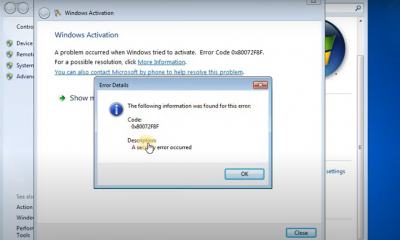Technology
Shielding Your Digital Identity: How to Stay Safe Online
With the increasing prevalence of cyber threats and data breaches, individuals must adopt proactive measures to protect their online presence. As cybercriminals become more sophisticated, protecting our digital identities has never been more crucial as it is today.
If you’d like to have digital identity theft explained to you in a simple to understand way, you’re in the right place! Also known as identity fraud, it occurs when someone gains unauthorized access to your personal information and uses it for fraudulent purposes. This can include stealing your social security number, financial details, or login credentials to impersonate you online, make unauthorized purchases, or commit other crimes. The repercussions of digital identity theft can be severe, ranging from financial loss to reputational damage and emotional distress.
Here are some effective tactics to fortify your online defenses:
1. Strong Passwords and Authentication
One of the foundational principles of online security is using strong, unique passwords for each of your accounts. Avoid using easily guessable passwords such as “password123” or common phrases. Instead, opt for complex combinations of letters, numbers, and symbols. Additionally, consider using a reputable password manager to securely store and manage your passwords across different accounts.
Furthermore, enable two-factor authentication (2FA) wherever possible. 2FA adds an extra layer of security by requiring not only a password but also a secondary form of verification, such as a code sent to your mobile device, fingerprint scan, or facial recognition.
2. Keep Software Updated
Software vulnerabilities are often exploited by cybercriminals to gain unauthorized access to your devices or accounts. To mitigate this risk, regularly update your operating system, applications, and antivirus software. These updates often contain patches for known security vulnerabilities, helping to keep your systems secure against emerging threats.
3. Beware of Phishing Attacks
Phishing attacks remain one of the most common tactics used by cybercriminals to steal sensitive information. Phishing typically involves sending deceptive emails or messages that appear to be from legitimate sources, prompting recipients to click on malicious links, disclose personal information, or download malware.
To avoid falling victim to phishing scams, scrutinize emails and messages carefully, especially those requesting sensitive information or urging immediate action. Be cautious of unexpected attachments or links, and verify the sender’s identity before responding to any requests for personal or financial information.
4. Secure Your Devices and Networks
Ensure that your devices, including computers, smartphones, and tablets, are protected by robust security measures. This includes installing reputable antivirus and antimalware software, enabling firewalls, and using encryption technologies to safeguard your data.
Additionally, secure your home Wi-Fi network with a strong, unique password and consider enabling network encryption, such as WPA2 or WPA3. Regularly update your router’s firmware to address security vulnerabilities and prevent unauthorized access to your network. Securing your Wi-Fi connection is the first line of defense against potential intruders seeking to access your network and compromise your digital identity. If you are wondering how to secure your wi-fi connection, here are a few essential steps to do so:
- Change Default Settings: Start by changing the default username and password of your router to unique, strong credentials. Default login credentials are often known to attackers and can be easily exploited.
- Enable Encryption: Ensure that your Wi-Fi network is encrypted with a strong encryption protocol such as WPA2 or WPA3. Encryption scrambles the data transmitted between your devices and router, making it unreadable to unauthorized parties.
- Use a Strong Password: Set a complex, alphanumeric password for your Wi-Fi network that is difficult to guess. Avoid using easily guessable passwords such as “password” or common phrases.
- Update Firmware Regularly: Keep your router’s firmware up to date to patch any vulnerabilities that could be exploited by attackers.
5. Practice Vigilance on Social Media
Exercise caution when sharing personal information on social media platforms. Cybercriminals often scour social media profiles for valuable information that can be used for identity theft or social engineering attacks.
Review your privacy settings on social media platforms to limit the visibility of your personal information to only trusted contacts. Avoid oversharing sensitive details such as your full birthdate, home address, or financial information.
6. Regularly Monitor Your Accounts
Keep a close eye on your financial accounts, credit reports, and online transactions for any suspicious activity. Report any unauthorized or fraudulent transactions to your financial institution immediately.
Consider using credit monitoring services that alert you to any unusual activity associated with your credit profile. Regularly review your credit reports from major credit bureaus to detect any signs of identity theft or fraudulent activity.
Conclusion
In conclusion, safeguarding your digital identity requires a proactive approach and a combination of effective security tactics. By implementing strong passwords, keeping software updated, staying vigilant against phishing attacks, securing your devices and networks, practicing discretion on social media, and monitoring your accounts regularly, you can significantly reduce the risk of falling victim to cyber threats and protect your online identity and privacy. Remember, investing in online security measures is an investment in safeguarding your digital future.


















